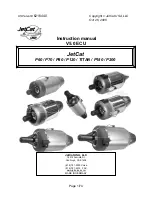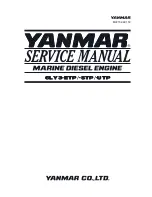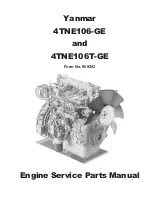
1
Pre-Installation Instructions:
DODGE short series brake motors (SSB) operate as a
spring-set, electrically released power-off brake to provide a
holding or parking action. DODGE motor brakes are factory
assembled and adjusted allowing for immediate operation.
WARNING:
When failure of brake or connecting equipment (gearbox,
coupling, etc.) may allow unexpected machine movement,
an additional holding device is required at the load. Failure
to observe this precaution could result in bodily injury.
All parts should be examined for any damage during the
shipping and handling process. All parts must be clean and
free of any foreign material. Care should be taken to ensure
that contaminants (such as grease from the motor) do not
contact the friction faces as this will cause the brake to operate
improperly.
WARNING:
This equipment is at line voltage when AC power is
connected. Disconnect and lock out all ungrounded
conductors of the AC power line. Failure to observe these
precautions could result in severe bodily injury or loss of
life.
Manual Release Operation
WARNING:
Do not manually release brake before blocking overhauling
loads to prevent unexpected machine movement. Failure to
observe this precaution could result in bodily injury.
The manual release lever is located at the top of the unit.
The direction of release is noted on the handle. To release the
unit, rotate the handle clockwise 90º to the stop position. DO
NOT over-rotate the handle as component damage could result.
Note: The manual release may slightly drag when the unit is
new. DO NOT adjust if the motor shaft can be turned by hand
when released. If the manual release can not be turned by
hand, follow the steps below to reset the air gap.
Maintenance Guide
TASK: Wear Adjustment
PROCEDURE:
Note: A new brake DOES NOT require wear adjustment.
Adjustment of the air gap is necessary if either or both of
these conditions are observed:
WARNING: Because of the possible danger to person(s) or property
from accidents which may result from the improper use of products,
it is important that correct procedures be followed. Products must be
used in accordance with the engineering information specified in the
catalog. Proper installation, maintenance and operation procedures
must be observed. The instructions in the instruction manuals must
be followed. Inspections should be made as necessary to assure
safe operation under prevailing conditions. Proper guards and other
suitable safety devices or procedures as may be desirable or as may be
specified in safety codes should be provided, and are neither provided
by Baldor Electric Company nor are the responsibility of Baldor Electric
Company. This unit and its associated equipment must be installed,
adjusted and maintained by qualified personnel who are familiar with
the construction and operation of all equipment in the system and
the potential hazards involved. When risk to persons or property may
be involved, a holding device must be an integral part of the driven
equipment beyond the speed reducer output shaft.
Short Series Brake Motors
These instructions must be read thoroughly before installing or operating this product.
1. A decrease in braking torque. Adjustment is recommended
when braking torque drops to approximately 80% of its
static rating.
2. Complete lack of disengagement (dragging), or motor is
stalled.
Wear Adjustment using feeler gauge (preferred)
1. Before attempting any adjustment to the brake, be sure
the power is turned off and there is no possibility of
motor start-up. The brake must be de-energized before
attempting wear adjustment.
2. Unscrew the 4 fan shroud cover bolts and remove the fan
shroud. (See Figure 1)
3. Unscrew the three adjustment bolt set screws located
radially around the field cup.
4. Place a .018” (for 3, 6 and 10 lb-ft units, 0.021” for 15, 20
and 25) thick feeler gauge between the clapper plate and
field cup (see Figure 1).
5. Turn the three slotted bolts counterclockwise (CCW)
alternately and evenly until the feeler gauge is snug
between the clapper plate and the field cup in at least
three locations around the clapper plate. The clapper plate
gap should measure as specified above in at least three
locations.
6. Tighten the three radial set screws. These set screws fix
the slotted adjustment screws and prevent them from
vibrating loose.
7. Install Fan shroud.
Wear Adjustment with no feeler gauge
1. Before attempting any adjustment to the brake, be sure
the power is turned off and there is no possibility of
motor start-up. The brake must be de-energized before
attempting wear adjustment.
2. Unscrew the 4 fan shroud cover bolts and remove the fan
shroud. (See Figure 1)
3. Unscrew the three adjustment bolt set screws located
radially around the field cup.
4. Tighten the three slotted bolts alternately and evenly
counterclockwise until there is no gap between the clapper
plate and field cup.
5. Back off the all three slotted bolts 1/2 turn.
6. Tighten the three radial set screws. These set screws fix
the slotted adjustment screws and prevent them from
vibrating loose.
7. Install Fan shroud.
Note: This method will give an approximate air gap of 0.018”.
This method should be used only when feeler gauges are
not available.
Warning:
Do not run motor without fan shroud Installed. Motor
overheating and Personal injury may occur.






















